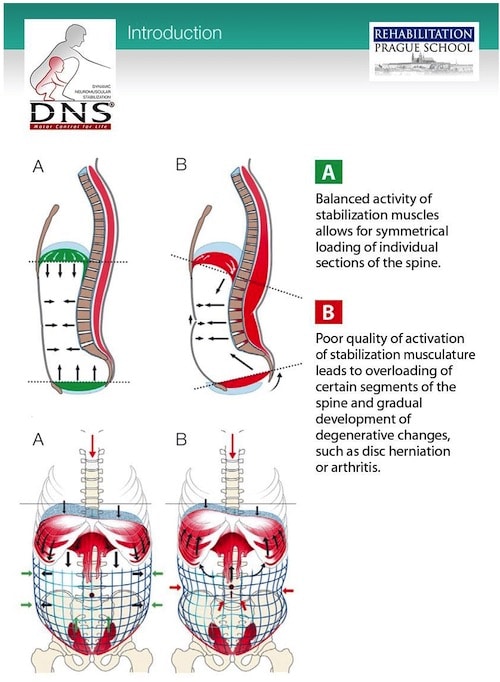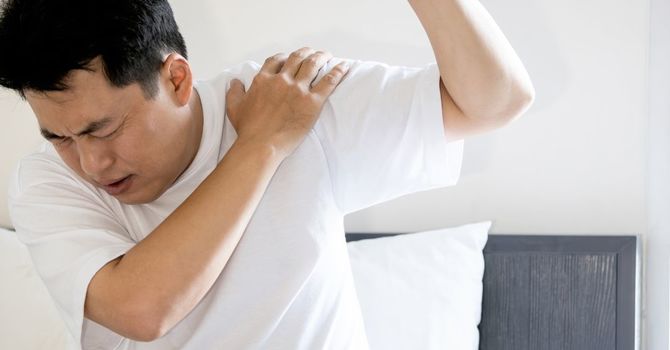
Introduction
In the world of corrective exercise, we often focus on movement patterns, muscle imbalances, and joint mobility. However, one critical element that is frequently overlooked is something we do every day without much thought: breathing. The way we breathe can profoundly influence our body’s mechanics, posture, and overall movement quality. When integrated properly into corrective exercises, breathing patterns can be a game-changer, transforming the way we move and helping us unlock our full potential.
Breathing is more than just inhaling and exhaling; it’s a powerful tool that, when used correctly, can enhance spine stabilization, improve posture, regulate the nervous system, optimize movement quality, and facilitate greater mobility. In this blog post, we’ll dive into the reasons why incorporating proper breathing techniques into your corrective exercise routine is essential and how it can make a significant difference in your fitness journey.
Let's take a look at why proper breathing techniques is so important for corrective exercise:
-
Optimizing Diaphragm Function: The diaphragm is the primary muscle responsible for breathing, but its role extends far beyond just respiration. When the diaphragm functions optimally, it plays a critical role in maintaining core stability. The diaphragm works in conjunction with other core muscles, such as the pelvic floor, transverse abdominis, and multifidus, to create intra-abdominal pressure. This pressure stabilizes the spine and pelvis during movement, which is essential for maintaining proper biomechanics and preventing injury.
However, many people do not use their diaphragms effectively due to poor breathing habits, stress, or postural imbalances. Instead, they may rely on accessory muscles in the neck and chest, leading to shallow, chest-dominant breathing. This can reduce the effectiveness of the diaphragm, leading to decreased core stability and increased vulnerability to injury, particularly in the lower back.
Incorporating proper breathing patterns into corrective exercises ensures that the diaphragm is engaged appropriately. This not only improves respiratory function but also enhances the body’s ability to stabilize itself during movement. By optimizing diaphragm function, individuals can perform exercises with greater efficiency and safety, reducing the risk of injury and improving overall performance.

-
Enhancing Posture: Posture is a key factor in overall musculoskeletal health, and breathing patterns have a profound impact on posture. Poor breathing habits, such as shallow chest breathing or holding the breath during movement, can lead to or exacerbate postural imbalances. For instance, chest breathing often leads to a forward head posture, rounded shoulders, and an elevated rib cage, which can cause or contribute to upper back and neck pain.
Corrective exercises aim to restore optimal alignment and function to the musculoskeletal system. Incorporating proper breathing patterns into these exercises helps to align the rib cage and pelvis, which are central to good posture. When the rib cage is positioned correctly, it allows the diaphragm to function effectively, and when the pelvis is in a neutral position, it supports the spine in maintaining its natural curves.
Moreover, proper breathing can help to relax overly tight muscles that contribute to poor posture, such as the upper trapezius and pectoralis muscles, while activating underused muscles, like the deep neck flexors and lower trapezius. By addressing these imbalances, breathing patterns can directly contribute to improved posture, which in turn enhances movement efficiency and reduces the risk of injury.
-
Regulating the Nervous System: The way we breathe has a direct influence on the autonomic nervous system, which controls the body’s involuntary functions, including heart rate, digestion, and stress responses. Breathing can either stimulate the sympathetic nervous system (associated with the "fight or flight" response) or the parasympathetic nervous system (associated with the "rest and digest" response).
When a person is stressed or anxious, their breathing typically becomes shallow and rapid, which can exacerbate a sympathetic state. This heightened state of arousal can lead to increased muscle tension, reduced flexibility, and poor movement patterns, all of which can hinder the effectiveness of corrective exercise.
Incorporating slow, deep breathing into corrective exercise can help shift the body into a parasympathetic state. This type of breathing promotes relaxation, reduces muscle tension, and enhances recovery. It also allows for greater focus and mindfulness during exercise, which can improve the quality of movement and make corrective exercises more effective.
By regulating the nervous system through proper breathing, individuals can create a more favorable environment for corrective exercises to take effect. This not only aids in physical recovery and performance but also supports mental well-being, creating a holistic approach to health and fitness.
-
Improving Movement Quality: Movement quality is often compromised when breathing patterns are dysfunctional. For example, if a person holds their breath during a squat or deadlift, they may inadvertently create excessive intra-abdominal pressure, leading to compensatory movements that place undue stress on the lower back. Similarly, shallow or irregular breathing can cause instability in the core, leading to poor movement mechanics and increased risk of injury.
Corrective exercises are designed to address these movement dysfunctions by restoring proper alignment, mobility, and muscle activation. Integrating proper breathing patterns into these exercises ensures that the body is moving in the most efficient and biomechanically sound manner. For instance, exhaling during the exertion phase of an exercise can help activate the deep core muscles and maintain spinal stability, while inhaling during the relaxation phase can facilitate proper muscle engagement and relaxation.
Furthermore, breathing correctly can help prevent common compensations, such as over-reliance on the lower back or hip flexors during core exercises. By encouraging the use of the diaphragm and deep core muscles, proper breathing promotes balanced muscle activation and better overall movement quality. This not only enhances the effectiveness of corrective exercises but also reduces the risk of injury and improves performance in other physical activities.

-
Facilitating Mobility: Mobility refers to the ability of a joint to move freely through its full range of motion. Proper breathing patterns play a crucial role in facilitating mobility, particularly in the thoracic spine and rib cage, which are often restricted in people with poor breathing habits. When the rib cage is elevated and the diaphragm is not functioning optimally, it can limit the movement of the thoracic spine, which in turn affects the mobility of the shoulders, neck, and lower back.
Incorporating proper breathing into corrective exercises can help to restore mobility by promoting the expansion and contraction of the rib cage, which allows the thoracic spine to move more freely. This improved mobility can then positively affect other areas of the body. For example, increased thoracic mobility can enhance shoulder function and reduce compensatory movements in the lower back.
Moreover, proper breathing can help to release tension in tight muscles that limit mobility. For instance, deep, diaphragmatic breathing can help to relax the muscles of the lower back, hips, and chest, allowing for greater flexibility and range of motion. This can make stretching and mobility exercises more effective, as the body is able to move more freely and without restriction.
By facilitating mobility through proper breathing, corrective exercises become more effective in addressing movement dysfunctions and improving overall physical performance. This holistic approach to mobility not only enhances flexibility and range of motion but also supports long-term musculoskeletal health and well-being.
Conclusion
Breathing is a fundamental aspect of life, yet its impact on movement and physical performance is often underestimated. As we’ve explored, proper breathing patterns can significantly enhance the effectiveness of corrective exercises by optimizing diaphragm function, improving posture, regulating the nervous system, enhancing movement quality, and facilitating mobility. By focusing on how you breathe during your workouts, you can unlock new levels of stability, strength, and flexibility, making your exercises more effective and reducing your risk of injury.
Incorporating these breathing techniques into your routine may require some initial practice and mindfulness, but the benefits are well worth the effort. Whether you’re an athlete looking to improve performance or someone simply aiming to move better and feel better, mastering your breathing can be a powerful tool in your fitness journey. So, the next time you step into the gym or begin your workout, remember: breathe better, move better.
Dr. Luke Bergner
Contact Me

